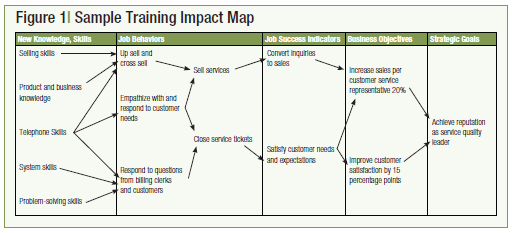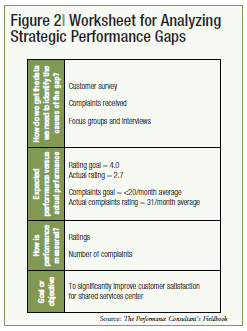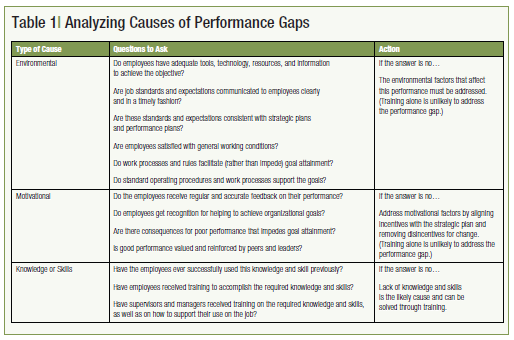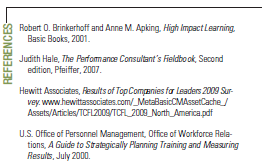The Public Manager Magazine Article
Making Training Strategic
Merriam-Webster defines the term strategy as a careful plan or method; a clever stratagem; the art of devising or employing plans or stratagems toward a goal. To make training more strategic within government agencies, it must be part of a larger plan or method that helps organizations achieve a spe...
Wed Apr 07 2010

Bookmark
Merriam-Webster defines the term strategy as a careful plan or method; a clever stratagem; the art of devising or employing plans or stratagems toward a goal. To make training more strategic within government agencies, it must be part of a larger plan or method that helps organizations achieve a specific goal. Goals are established by the agencys strategic and performance plans and are further elaborated in the workforce plan, as well as various business plans.
Linking Training to Strategic and Performance Plans
Strategic plans include goals supported by objectives, which specify what needs to be done to achieve the goal and should be stated in measurable terms. The agency training staff needs to analyze objectives in the strategic plan to identify skills and behaviors required to achieve them. A good way to do this is to construct a training impact map, a tool developed by Robert Brinkerhoff and Anne Apking. Figure 1 provides an example of a training impact map used for training customer service representatives in a shared services center.

The data provided in Figure 2 shows a gap in performance expressed in customer satisfaction ratings and the number of complaints received each month. With that data in hand, the agencys next step is to determine the cause of these gaps. Data can be collected and analyzed from a variety of sources, including the customer satisfaction survey, the administrative complaints process, focus groups, and interviews. Focus groups and interviews may also include customers and employees.
Causes behind human performance gaps fall into three broad categories: environmental, motivational, and knowledge or skill deficits. In the vast majority of casesas much as 90 percent, according to some estimatesinadequate employee performance is due to environmental or motivational issues.
Training is a relatively expensive solution and can only address inadequate knowledge or skills. Therefore, it is worthwhile to carefully analyze the performance and consider all possible causes of the gap that exists. Table 1, excerpted from the U.S. Office of Personnel Managements (OPM) A Guide to Strategically Planning Training and Measuring Results, outlines a deductive approach to this sort of analysis. It says that training should be considered only if other possible causes of poor performance can be ruled out first.

Evolving from Training to Learning
Making training more strategic ultimately requires an understanding of the radical shift in the role of training in the workplace in the past decade. Due to the fast pace of change in todays workplace, the advent of new technologies, and the growing complexity of problems facing government agencies, the ability to learn quickly has become a survival skill. Ready-made solutions to problems are becoming rare due to their complexity and novelty.
More than ever, effective solutions require close collaboration across silos and organizational boundaries. The ability to be collaborative, innovative, and agile has never been more critical. These competencies should figure prominently in hiring, promotion, and selection for leadership development programs.
The training function will never become strategic until agency leaders start managing it strategically. This requires a shift from funding programs and courses to funding learning initiatives that results in improved performance. Staff responsible for training should be held accountable for equipping employees with skills and behaviors that contribute to achieving agency goals and objectives.
Leaders must be willing to discard comfortable but outdated measures, such as number of employees trained or hours of training provided, and replace them with strategic outcome measures. Onboarding and training for new hires, for example, is best measured by time to competencynot by how many people attended the courses. Replace end-of-course smile sheets with an evaluation of how many trainees used their new knowledge or skill to improve their performance or the performance of their projects. A course on managing project budgets, for example, is not useful unless it contributes to improving employees ability to manage their budgets according to plan.
Training has become somewhat of a misnomer. The classroom will continue to have its place, but much of learning will take place outside the classroom, and the most effective learning will result from the richness of face-to-face interaction with others. This new reality is already in evidence in many government agencies. If the rapid pace of technology creates challenges, it also provides partial solutions in the learning arena.
The workplace now includes significant numbers of Generation X and Generation Y employees who have grown up with technology as part of their personal life and integral to the way they learn. They expect this technologyinstant messaging, online chats, blogs, podcasts, wikis, and continuous connectivity to the Internetto be available to them at work. Employees want the ability to connect with colleagues and subject matter experts to get quick answers to questions, try out new ideas, or just get feedback on a draft work product. Training programs should make extensive use of Web 2.0 technologies, especially in conjunction with face-to-face training in the classroom.
Shaping a Learning Culture
A final consideration is the role that senior managers can play in shaping a workplace culture that fosters and values learning. There are many ways to embed the learning imperative into supervisory training, leadership development, and daily management practices. Projects should be required to start with reviewing lessons learned from similar past projects, and they should end with their own lessons-learned review.
Learning and development can be a standing agenda item for executive staff meetings, with required updates on progress. Developing others should be a core competency that managers are required to master, and their support for employee development should be part of their performance appraisal.
A recent study by the Institute for Corporate Productivity (i4cp) revealed top-level support to be the single most important ingredient in the talent management programs of high-performing organizations. More agencies need to adopt the leaders as teachers model whereby executives spend time in classrooms and auditoriums sharing their stories and experiences with employees.
The Hewitt Associates Top Companies for Leaders 2009 survey revealed that 96 percent have programs that get leaders into the classroom and 92 percent assess leaders performance based in part on how well they develop others. Bottom line: Leaders should take every opportunity to emphasize the importance of learning and development.


